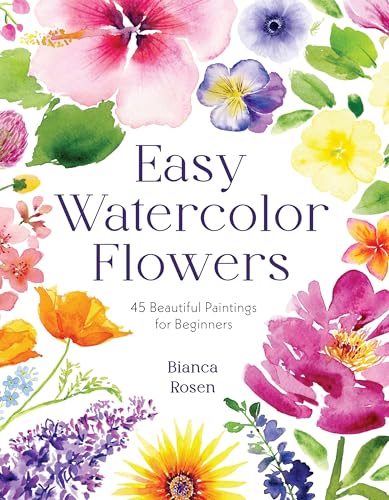Dive into Watercolor: Beginner-Friendly Workbooks and Essentials
Watercolor painting can seem daunting, but with the right tools and guidance, it can be a relaxing and rewarding hobby. This article explores beginner-friendly watercolor workbooks, like the Ugalqan one mentioned, and other essential supplies to help you embark on your watercolor journey.
Understanding Beginner Watercolor Workbooks
Beginner watercolor workbooks, such as the Ugalqan one featured, are specifically designed to ease newcomers into the world of watercolor. They typically offer a structured approach, breaking down complex techniques into manageable steps.
What Makes a Workbook Beginner-Friendly?
- Pre-printed Outlines: Many workbooks feature pre-printed outlines of images. This allows you to focus on color mixing and brush control without worrying about drawing accuracy.
- Step-by-Step Instructions: Clear, concise instructions guide you through each painting, often accompanied by illustrations or diagrams.
- Color Mixing Guides: These help you understand how to create different colors and shades, taking the guesswork out of achieving the desired hues. 🌈
- Practice Exercises: Dedicated exercises focus on specific techniques, such as wet-on-wet, dry brush, and lifting color.
- High-Quality Paper: Workbooks often use thicker watercolor paper designed to withstand washes and prevent buckling, crucial for a good painting experience.
Ugalqan Watercolor Workbook: A Closer Look
Based on the provided Amazon link, the Ugalqan Watercolor Workbook aims to be a beginner-friendly option. Key features likely include the points mentioned above, such as pre-printed templates, color mixing instructions, and step-by-step projects. Consider looking for user reviews to gain insights into its actual user experience.
Essential Watercolor Supplies for Beginners
Beyond a workbook, you’ll need a few key supplies to get started.
Watercolor Paints
- Pan Sets: A convenient and affordable option for beginners. Start with a basic set of 12-24 colors.
- Tube Paints: Offer more control over color intensity and consistency. They are generally preferred as you progress, but pan sets are a great starting point.
Watercolor Brushes
- Round Brushes: Versatile brushes for detail work, washes, and line work.
- Flat Brushes: Ideal for creating washes, backgrounds, and straight lines.
- Variety of Sizes: A set of brushes in different sizes will allow you to tackle various painting tasks.
Watercolor Paper
- Cold Press: Textured paper suitable for general watercolor painting.
- Hot Press: Smooth paper ideal for detailed work and fine lines.
- Weight: Choose paper with a weight of at least 140 lb (300 gsm) to prevent buckling when wet.
Additional Tools
- Palette: For mixing colors. A ceramic plate or plastic palette works well.
- Water Container: Two containers are ideal: one for rinsing your brush and one with clean water for diluting paint. 💧
- Paper Towels or Cloth: For blotting your brush and cleaning up spills.
- Masking Tape: To secure your paper to a board and create clean edges.
Tips for Beginner Watercolor Artists
- Start Simple: Don’t try to create complex masterpieces right away. Focus on mastering basic techniques.
- Practice Regularly: Consistent practice is key to improving your skills. Even 15-30 minutes a day can make a difference.
- Experiment with Colors: Don’t be afraid to mix colors and see what you can create.
- Watch Tutorials: Online tutorials can provide valuable insights and guidance. YouTube is a great resource.
- Be Patient: Watercolor painting requires patience and practice. Don’t get discouraged if your first attempts aren’t perfect. Enjoy the process! 😊
By investing in a beginner-friendly workbook and essential supplies, you can confidently embark on your watercolor journey and unlock your artistic potential. Happy painting! 🎨





Post Comment